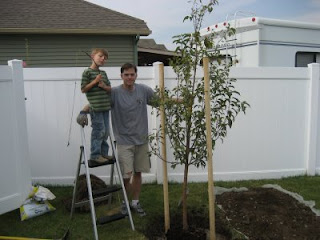
Here's a photo of my collection of expensive plant reference books that I rarely use anymore. Like so many other aspects of my life, the internet has completely changed the way I look up information on plants. I remember a college assigment to create plant information sheets on a large group of plants. It was such a chore to dig around in books and old catalogs to find the necessary information and a picture. Now all that knowledge is at my fingertips every time I turn on my computer. Another advantage of looking up plants on the internet is that I can find information about the newest introductions. Many of these cultivars aren't in my reference books, since they were introduced after the books were published.
After learning through sad experience that catalogs don't give much information about a plant's shortcomings and often don't have an accurately colored picture, I usually do some extra research on potential buys before ordering. Google is an excellent start. I search for the cultivar and common name or occasionally the latin name. For example, I might type 'Barbara Mitchell daylily.' The first result to come up for this search is from the Dave's Garden plantfiles. The Dave's Garden website allows users to upload their own photos, comments and ratings about plants. I find it to be an excellent resource. If the plant I'm researching doesn't pull up the DG plantfiles as a result, I'll often go directly to their search page. The drawback to this approach is that I'm not a member, so I can't search more than 10 times a day. Anyway, the plantfile on the Barbara Mitchell daylily lists the height, width, bloom time and other data. It also includes seven reviews of the plant from actual gardeners and thirty-eight photos! Barbara Mitchell is a particularly popular daylily, so not every plantfile will include so much information.
If the DG plantfiles aren't enough, I'll click on some of the other search results. Of course different online catalogs give different bits of information, so I can get to know a plant better by reading several of their descriptions. When I was doing a lot of research about the trees I wanted for my yard, I found some excellent information on university websites that came up on the Google search.
Another plant reference website that I should mention is Monrovia.com. This wholesale nursery is known for selling well-grown specimens of the best plant cultivars. If a plant I'm considering is grown by Monrovia, that's a point in its favor. Their website is beautifully designed and very informative. In addition to their plant search feature, I love the 'Inspiration' section of the website. It features gorgeous pictures of various styles of gardens, a quiz to help you define your style, and information about public gardens throughout the United States.
I do agree that nothing can replace the comforting feeling of settling into a soft couch with a book in hand, but now I can save my book budget for other types of gardening books. If you absolutely have to have just one plant reference book, I'd recommend the American Horticultural Society's Encyclopedia of Garden Plants, nicknamed the plant bible at one nursery where I used to work. For friends who need help narrowing down the dizzying selection of plants for their yards, I recommend Sunset's Top 10 Plants series. Here's the link for the Northwest version, and Amazon also offers versions for California, the Mid-Atlantic, the Midwest, Florida and the Tri-State region. After reading a nice review of it on another gardener's blog (wish I could remember whose it was), my garden book wish list includes Plant-Driven Design.
Happy researching!






























































